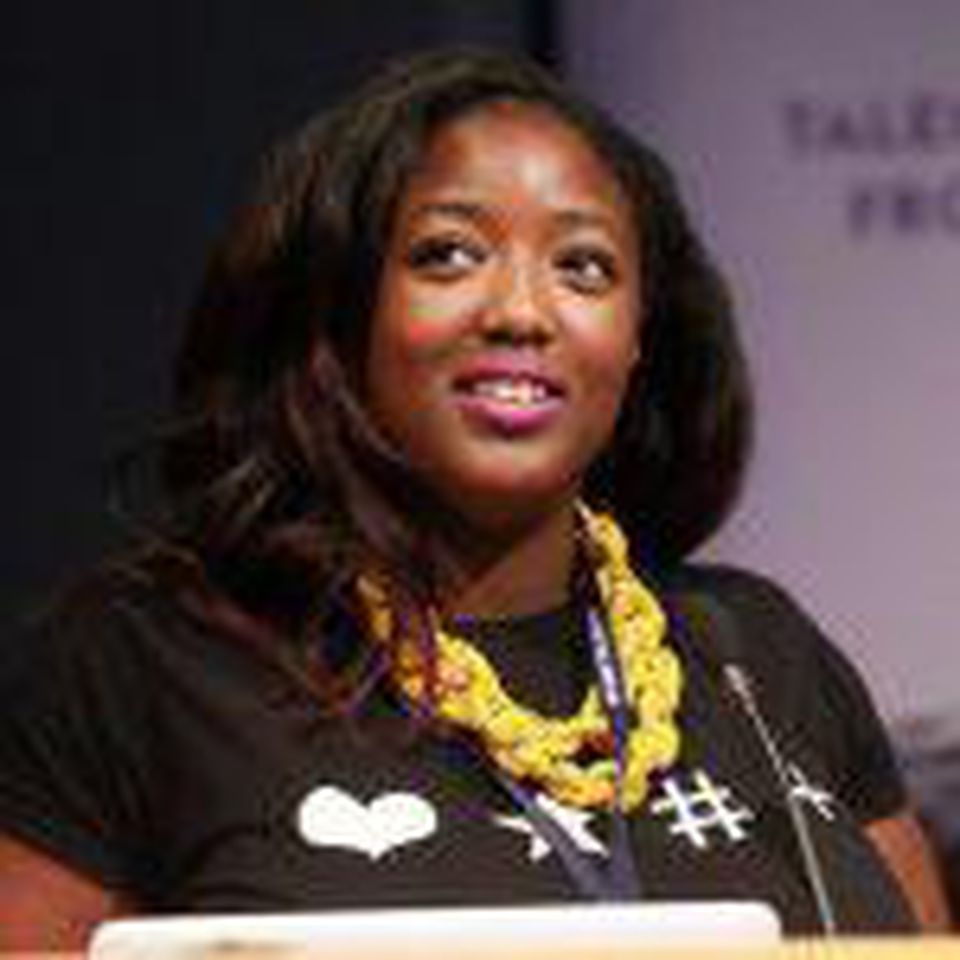Noel Sharkey Antiguo colaboradorIA y Big DataEscribo sobre beneficios, errores y exageraciones de los robots, la inteligencia artificial, el aprendizaje automático y las nuevas tecnologías.
Injustice against women persists in the application of new technologies. While our values and norms evolve, the old values remain locked into the internet. Gender-biased algorithms are becoming rampant. And these are not the only problems that women face with this male-dominated industry. As the battle for equality inside and outside the workplace continues, it is time to step up to the mark and make the changes needed to create social justice. If we are to become the equal society that we aspire to or pretend to be, then we need to ensure diversity in the workplace.
I wanted to make a strong case for why gender diversity is so key to the success of the tech industries. But for once I’m keeping my mouth firmly shut and drawing upon the deeper and richer insights of eight prominent women in the sector. They bring a wealth of experience from roles ranging from CEO to software engineer. I asked each of them two questions.
(i) Why is gender diversity important in the tech community?
(ii) What can be done to create a better gender balance?
The interviews

Anne-Marie Imafidon MBE is CEO of social enterprise Stemettes, who work with uncaptionedgirls as young as 5 to inspire, encourage and support them into STEM related careers. They run hackathons, panel events, a mentoring programme and app to this end. Anne-Marie is also an international keynote speaker, board member and policy influencer.
Why is gender diversity important in the tech community?
AI: It’s important because the tech community is about solving problems, and you’re only as good as the perspectives you have when solving problems. If you’re not able to ensure you have inclusive environments where all genders (and different types of people) can flourish, then you’ve got no chance at building technology that actually does good.
What can be done to create a better gender balance?
AI: There’re oodles of suggestions on Better Allies, but in short, we need to make sure that we recruit, retain and promote all genders properly within the industry. It would also be amazing if the media was able to tell stories of all kinds of people who have done well in the past & present of tech. The stereotype is not only getting old, but is also harmful for our societal norms around technical people. Enough Sheldons (ie Big Bang Theory), more Katherines (a la Hidden Figures).

Francesca Rossi is the AI Ethics Global Leader and a Distinguished Research Staff uncaptionedMember at IBM Research AI, and a professor of computer science at the University of Padova, Italy. She has been president of IJCAI and an executive councilor of AAAI. She is in the executive committee of the IEEE global ethics initiative. She represents IBM on the board of directors of the Partnership on AI and is a member of the European Commission High-Level Expert Group on AI.
Why is gender diversity important in the tech community?
FR: Technical solutions to detect and mitigate bias created by data-driven approaches to AI are important. However, it is also essential that designers and developers’ teams are aware of their possible bias and careful about not injecting it into the various parts of an AI system. In this respect, it is essential that such teams are diverse and inclusive.
Gender diversity is good for business: companies with higher percentages of women in senior roles have a greater return for their shareholders, according to a Credit Suisse report. Yet Girls Who Code estimates that fewer than 1 in 5 computer science graduates are women and that by 2022 the USA will need two million cybersecurity jobs, but women currently make up only 10 percent of the cybersecurity workforce. This means that many teams will not be diverse and inclusive.
What can be done to create a better gender balance?
FR: We need to address inequality at every level–whether internships, entry-level or mid-career–and develop a gender equality infrastructure within companies to offer as many opportunities to women as to men. Girls who Code offers opportunities to learn computer science, to identify pathways to computing jobs, and to connect with role models and supporters.
The IBM’s Elevate program helps mid-career women at IBM develop leadership skills and gain experience. Since the program was launched in 2015, more than half the women in the program have been promoted to senior leadership. Also, women exiting the workforce—to care for children or for other reasons— should be encouraged and supported rather than penalized. IBM’s Tech Re-Entry helps such women undertake a 12-week science, technology or engineering internship at IBM and then offers full-time employment at its conclusion.

Jennifer Chayes is Technical Fellow and Managing Director of Microsoft Research New England, NYC, and Montreal. She was for many years Professor of Mathematics at UCLA. She has authored over 140 academic papers and is the inventor of over 30 patents. Her research areas include phase transitions in computer science, structural and dynamical properties of networks, graph theory, graph algorithms, and computational biology.
Why is gender diversity important in the tech community?
JC: We do not have the necessary workforce to create the technologies to address societal problems. Simply from a numbers perspective, we can’t afford to lose half of our potential talent. Hence, we need gender diversity, as well as other forms of diversity – racial, cultural, etc. Moreover, these different perspectives lead to better, more adaptable and robust, and fairer solutions. More diverse groups tend to be a lot more creative in their approaches. For example, in my own labs, a group of women and men with different approaches helped to found the important new field of FATE (Fairness, Accountability, Transparency and Ethics) in AI, which I believe would not have happened in a group of men (or women) alone.
What can be done to create a better gender balance?
JC: In order to get a more diverse workforce in AI, we need to increase the pipeline, hire more women and minorities into AI positions, and create an environment in which they are given opportunities to thrive so that we can retain them.
Interestingly, AI is now being used in hiring: AI algorithms match candidates with positions. If algorithms are blindly applied, they can actually increase bias by optimizing certain metrics, thereby amplifying bias in the data. We recently came up with a set of algorithms we call greenlining which can lead to hiring which is more diverse, rather than less diverse, than human hiring decisions. It’s just the beginning.

Lucy Suchman is Professor of Anthropology of Science and Technology in the uncaptionedDepartment of Sociology at Lancaster University in the UK. Before taking up her present post she was a Principal Scientist at Xerox’s Palo Alto Research Center, where she spent twenty years as a researcher. Her book Plans and Situated Actions: The Problem of Human-machine Communication (1987), provided intellectual foundations for the field of HCI.
Why is gender diversity important in the tech community?
LS: Diversity matters for two fundamental reasons; first, as a matter of social justice and second, because of the fact that life experience is profoundly consequential for what we can know and understand about the world, and for the limits of our knowledge and understanding. We can only appreciate and extend, those limits through encounters with knowers who are very differently located. Exclusion and bias, then, are deeply entangled.
What can be done to create a better gender balance?
LS: We need to address the systemic conditions that perpetuate discrimination, beginning with recognition of how particular forms of dominant identity (e.g. White, male, professional) reproduce themselves and their privilege. The tech community both inherits that privilege, and takes it forward in particular ways. For example, there is a powerful tendency to mistake familiarity for competency; that is, those who are most like us are the ones who fit, who are qualified. Getting over that bias requires humility, openness to difference, and a deep commitment to social change – none of which are in great supply in the mainstream tech community!

Laura Nolan is a software engineer specializing in distributed systems reliability. She speaks publicly on this topic, was a contributor to the bestselling book 'Site Reliability Engineering: How Google Runs Production Systems' and is on the steering committee of USENIX's SREcon family of conferences. Until a few months ago, she was a Staff software engineer at Google [a grade above senior software engineer]
Why is gender diversity important in the tech community?
LN: There are lots of issues that disproportionately affect women, from bias in AI systems to bullying and abuse online, to the increase in inequality that technology and the rise of the gig economy are driving. In the absence of women, technology tends to be developed that ignores or marginalizes women, e.g., the major health apps that track menstrual cycles don’t deal properly with pregnancy or miscarriages. Women would not overlook that. Many technology issues are women’s rights issues, and therefore human rights issues. We are the majority of humanity, after all.
The current culture in tech means that women have to deal with everything from outright harassment to subtle exclusion to having ideas ignored and then appropriated by men. It’s still very hard for women to succeed in this field. You have to have a thick skin to do it and to be very determined. So many women with very strong skills just get tired of the culture of working in majority male teams and leave.
What can be done to create a better gender balance?
LN: Management in the technology industry has to step up and deal with harassment and bullying of women, and until that is fixed we will continue to lose women. Recent scandals at companies like Uber, Riot Games and Google demonstrate that many companies in the industry are not taking harassment of women seriously enough. There are more mundane issues for women too, like greater nit-picking in reviews of code. Having your competency continuously challenged in subtle ways gets really tiring over the long run. The tech organisations need to work harder to change this male-dominated culture. Then, with a bit of creativity, they will be able to find and retain many smart, capable women who can shine as software engineers.

Kay Firth-Butterfield is Head of AI and ML at the World Economic Forum. She is uncaptionedan expert in AI Governance and Ethics and is widely consulted by companies, governments, including G7, and non-profits. Kay is Vice Chair of the IEEE Global Initiative on Ethical Design of AIS and an Advisory Board member of FRR and AI4All. She is Master of the Inner Temple and a Liveryman of the City of London.
Why is gender diversity important in the tech community?
KF: Diversity is important in all areas of life. When I first started in law there was very little gender or racial diversity. Fortunately, this has been addressed. The public need to be able to choose lawyers who represent them and diversity is part of that representation. The same is true of the tech community. For example, AI scientists are creating applications that affect all sectors of the public and yet they represent small sectors of the public at large in their backgrounds. This means that the algorithms created can be biased, unjust and unrepresentative and that the scientists do not give deep thought to the impact of their work on society because they don’t understand all facets in a way in which they would if the community was as diverse as the public.”
What can be done to create a better gender balance?
KF: We need to train more AI scientists from diverse backgrounds. This can be achieved by recognising that there are not enough places at Universities for all AI scientists and some University selection systems reinforce the lack of diversity. Thus, we need to encourage companies to train in-house and select from a diverse talent pool. Also, we need to support efforts, such as those of AI4All, to bring the skills needed for disadvantaged populations to succeed in AI to them. Additionally, movement of scientists around the world should be encouraged so that we have multi-racial teams involved in programming.”

Sarah Porter is CEO and Founder of InspiredMinds, a global tech and science strategy group that aligns emerging technology with the United Nations global goals by organizing world leading summits such as the world summit AI.
Why is gender diversity important in the tech community?
SP: Sophia the robot was recently granted citizenship in Saudi Arabia and ‘said’ that ‘she’ campaigns for women rights and that ‘she’ wants to have a baby. This farce of representation is precisely why gender diversity in the tech community is critically important. When technology is created by predominantly male coders and creators, it upholds inequities in the real world with serious consequences.
There is evidence of the manifestation of patriarchal stereotypes in fast-growing applications of AI – from softly spoken, girly named female voiced chatbots and care assistants, to the sexbot (a subservient and objectification of the female form), and the looming threat of lethal autonomous weapons that could dehumanise the critical decision-making process of warfare. Without the input of women, tech results in the very biases we are trying to eradicate in #metoo and #paygap.
What can be done to create a better balance?
SP: At the simplest level codes of ethics that script fundamental norms around the creation and deployment of `AI would be a good place to start. At a more complex level encouraging more women into STEM education from marginalised communities could start to address the balance of inequity. Whilst easier said than done, we need a democratised approach to the creation of AI applications where those from multicultural, multidisciplinary and diverse backgrounds can contribute. Some exciting projects are emerging such as AI commons and ALLAI that are aiming to democratise AI and ensure that it is not created by the white male from the Global North. Such projects would result in a more positive and equitable future with AI that Emmeline Pankhurst would have applauded.

Joy Boulamwini is a Ghanaian-American computer scientist and digital activist based at the MIT Media Lab. She is the founder of the Algorithmic Justice League, an initiative that uses art and research to investigate the social impact of artificial intelligence.
Why is gender diversity important in the tech community?
JB: Monocultures die. A healthy tech ecosystem cannot thrive if only a narrow subset of the population is involved in shaping the products and services that shape our lives. Any company with global aspirations must think about full spectrum inclusion. How can you claim to develop technology to transform the world when you are leaving out the undersampled majority- women and people of color?
What can be done to create a better gender balance?
JB: Inclusion requires intention and invitation. Companies need to examine biases in their current practices that exclude groups that have been historically underrepresented. If your hiring happens mainly through word of mouth or network effects and you have a homogenous network, you will only reinforce the status quo. Maintaining diversity also requires developing safe working environments. The #MeToo movement is an important reminder of the additional hurdles women and non-binary individuals disproportionately can face.
Lessons learned
It’s clear that we’re hemorrhaging female talent at a time when it is crucially needed to ensure fairness and justice in the technologies that we are developing and using. How can we possibly afford to do that? We need to change the culture in the tech workplace and we need to educate, recruit and retain more women in the sector.
There was strong agreement among the interviewees about why diversity is important in creating fairer and less biased technology. We read about how companies with more women in senior roles produce greater shareholder returns and how an inclusive environment means a greater chance for AI to do good. There is also concern about how AI and robotics currently create a servile and inferior representation of women and an objectification of the female form.
The responses explain how the retention of women in the workplace can be impeded by a dominant white male identity that reproduces itself and its privilege, by harassment, bullying and setting higher standards for women in coding. Problems of recruitment are also emphasized. Hiring often happens by word of mouth or through homogenous networks that reinforce the status quo. And, ironically, algorithms developed to make shortlisting and hiring fairer are so often biased because of a lack of diversity in the teams developing them. It is a self-perpetuating system.
We urgently need more large-scale government initiatives. And as for the big tech companies, let me tell you: It is no use walking the walk and talking the talk unless you actually commit to enforceable targets. And you need to clean up your acts and apply better supervision and training in your male-dominated cultures to allow female talent to thrive.
I’m reminded of the old ‘drunk and the lamppost’ joke where a drunk is crawling around under a lamppost looking for his keys. A woman passing by asks him where he lost them. He points across the street and says, “over there but it’s too dark there to find them”.
The lesson here for the tech sector is to stop complaining about how difficult it is to find high-quality technical talent and try looking in the right place




